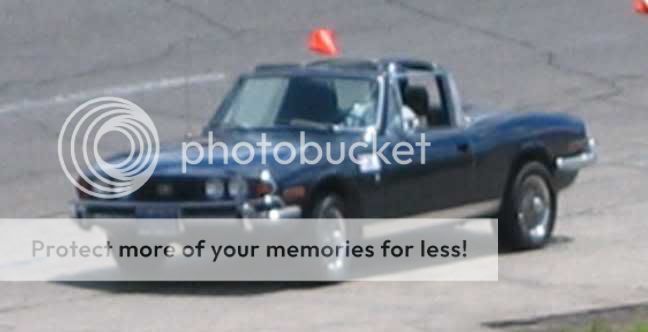doughairfield
Jedi Trainee
Offline
tdskip,
Would that also bolt right up to a TR4?
Would that also bolt right up to a TR4?
 Hi Guest!
Hi Guest!

 smilie in place of the real @
smilie in place of the real @
 Pretty Please - add it to our Events forum(s) and add to the calendar! >> Here's How <<
Pretty Please - add it to our Events forum(s) and add to the calendar! >> Here's How << 
Almost certainly not, IMO. The TR4 has basically a TR3 frame with some spacers added to move the front suspension farther out; while the TR4A frame was redesigned mostly from scratch (and hence doesn't have any funny spacers). So the spacing between the frame rails is different almost everywhere.doughairfield said:tdskip,
Would that also bolt right up to a TR4?
Little of both, IMO, but the caution is very definitely a good one. Unless you are expecting it, oversteer can be very unsettling and quite apt to leave you sitting in the weeds wondering what happened.bobh said:
TR3driver said:Running a stiff bar in the rear also leads to wheel lift and loss of traction.
swift6 said:TR3driver said:Running a stiff bar in the rear also leads to wheel lift and loss of traction.
And that... is oversteer.
If only one tire loses traction, then there is no lateral movement.swift6 said:Loss of traction in the rear tires, by whatever means, resulting in lateral movement
TR3driver said:If only one tire loses traction, then there is no lateral movement.swift6 said:Loss of traction in the rear tires, by whatever means, resulting in lateral movement
Yup, if that happened, then that's what it would be. But it didn't, so it wasn't. Contrariwise.swift6 said:When you felt your steering become more "neutral" you were generating an oversteer dynamic,
TR3driver said:Yup, if that happened, then that's what it would be. But it didn't, so it wasn't. Contrariwise.swift6 said:When you felt your steering become more "neutral" you were generating an oversteer dynamic,
TR3driver said:my inside rear tire was light enough to spin through almost the entire turn (someone later told me they could see the tire smoke) and yet the steering was very nearly neutral (the other tires weren't loaded enough to even develop much of a slip angle).

Not if the weight transfer is equal front/rear. (Or the front/rear difference happens to match the compliance of the tires.)swift6 said:That weight transfer and all that comes with it is going to have an effect on the understeer and oversteer balance of the car.
